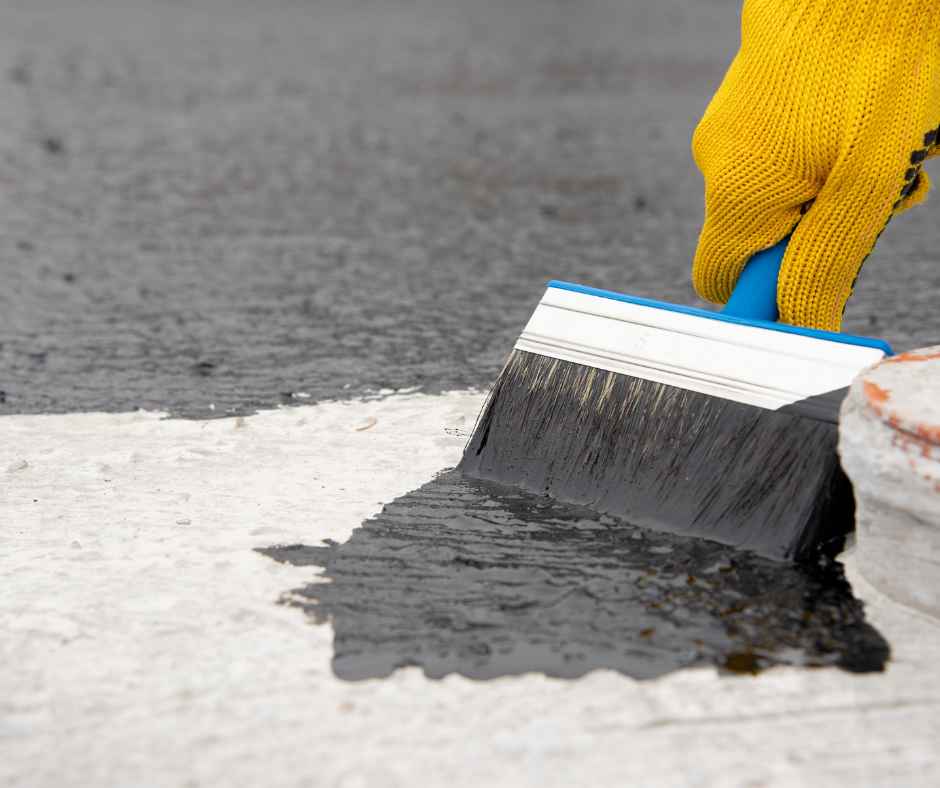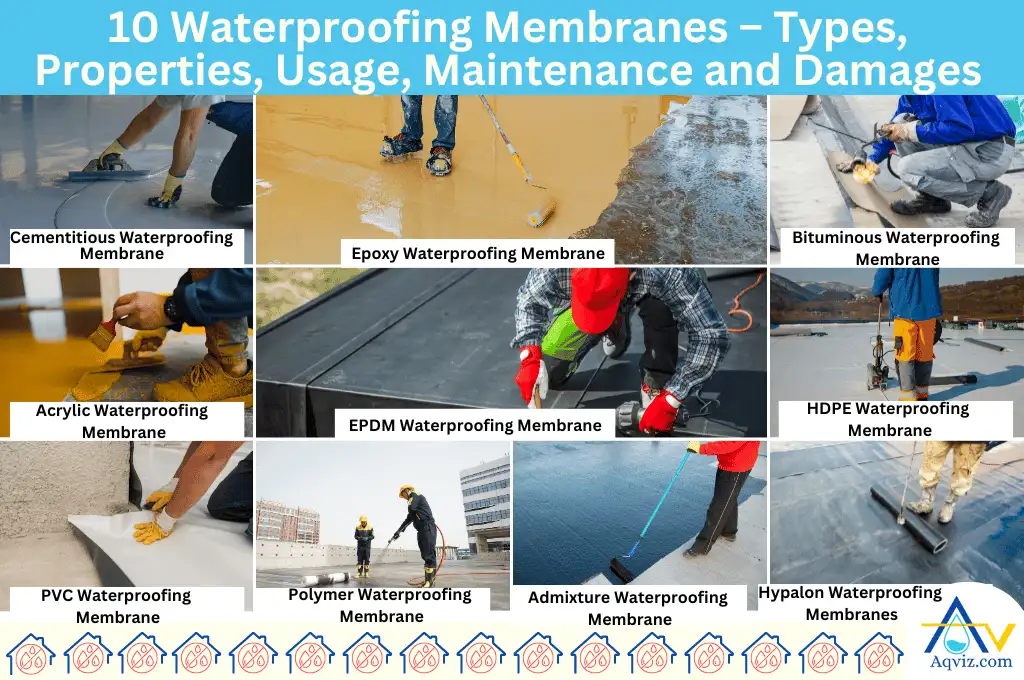Sump pump installation & replacement Omaha: The Beginner’s Guide
Why Waterproofing Is Critical for Long-Lasting Structures: a Thorough Analysis
Waterproofing plays an essential function in the durability of structures. It acts as a barrier against dampness, which can cause significant problems like mold and deterioration. Comprehending the different waterproofing approaches and their implications is vital for homeowner. The repercussions of ignoring this aspect can be extreme. Exploring these elements discloses not just the necessity of waterproofing, yet additionally its wider impact on home worth and safety and security.
Understanding Waterproofing: Meaning and Significance
Waterproofing functions as an important obstacle against wetness invasion, guarding frameworks from possible damages. It encompasses various methods and products created to stop water infiltration right into buildings, guaranteeing long life and capability. The relevance of waterproofing can not be overemphasized, as it safeguards versus a range of issues, consisting of mold and mildew development, damage of materials, and structural weakening.Effective waterproofing services can consist of membranes, coatings, and sealers, each tailored to particular environments and structural styles. By producing a protective layer, these services assist keep a completely dry interior, which is critical for the wellness of occupants and the conservation of building value.Moreover, buying waterproofing at the building phase is significantly extra affordable than dealing with water-related issues after they emerge. Comprehending the principles of waterproofing is vital for architects, builders, and building proprietors aiming for durable, resilient frameworks that stand up to the examination of time and environmental obstacles.

The Effect of Water Damages on Architectural Integrity
Water damages postures considerable threats to structural integrity, mostly through the growth of mold and mildew. These microorganisms not just compromise indoor air high quality yet also lead to product degradation in time. Furthermore, long term exposure to wetness can weaken structural elements, increasing the chance of collapse or failing.
Mold and Mildew Development
Moisture breach positions a considerable hazard to the architectural integrity of structures, bring about the spreading of mold and mildew and mildew. These fungis grow in damp settings, typically settling in surprise locations such as wall tooth cavities, under floor covering, and in ceilings. Their growth not just produces unpleasant discolorations and unpleasant smells however also contributes to a decrease in indoor air top quality, positioning health and wellness risks to residents. Mold and mildew and mildew can compromise products like timber and drywall, resulting in further dampness retention and developing a cycle of damage. Early detection and removal are necessary to avoid comprehensive growth, highlighting the need of efficient waterproofing procedures. Addressing moisture concerns quickly can shield both the wellness of inhabitants and the durability of the structure.
Structural Weakening Threats
Uncontrolled moisture intrusion can bring about severe architectural weakening, endangering the integrity of structures. Water damage frequently influences fundamental parts, such as beam of lights, columns, and wall surfaces, causing jeopardized load-bearing ability. Extended exposure to moisture can create products like wood to rot and steel to corrode, weakening their structural homes. This degeneration might bring about splits, bowing, or perhaps catastrophic failures if left unaddressed. Basement waterproofing Omaha. Additionally, water seepage can undermine the soil below structures, causing settling or shifting that more intensifies structural dangers. Therefore, carrying out efficient waterproofing remedies is important in maintaining a structure's structural integrity, protecting against pricey repairs, and ensuring safety for residents. Appropriate upkeep and aggressive steps are necessary in alleviating these significant dangers linked with water damage
Types of Waterproofing Methods and Products
Waterproofing approaches and products play an important role in protecting frameworks from water damages. Trick strategies include membrane waterproofing, which gives a physical obstacle; fluid waterproofing options that create a seamless coat; and cementitious waterproofing options understood for their resilience and simplicity of application. Comprehending these various approaches is necessary for choosing one of the most proper approach for certain construction requirements.
Membrane Layer Waterproofing Strategies
Membrane layer waterproofing methods are vital for protecting frameworks from the destructive results of water infiltration. These methods involve the application of water-proof membranes that create a barrier versus moisture. Both key kinds of membrane layer systems are sheet membranes and liquid-applied membrane layers. Sheet membranes, normally made from materials such as rubberized asphalt or polycarbonate, are erected and can be turned out and complied with surface areas. On the other hand, liquid-applied membranes are used as a fluid and cure to develop a seamless layer. Both types offer flexibility and longevity, satisfying different applications, including roofs, cellars, and foundations. Correct installation and upkeep of these membranes ensure lasting protection, enhancing the life-span and stability of the structures they safeguard.
Fluid Waterproofing Solutions
Fluid waterproofing solutions represent a versatile choice to conventional membrane systems. These solutions commonly include the application of liquid layers that cure to form a seamless, sturdy barrier versus water seepage. Numerous sorts of fluid waterproofing materials are readily available, consisting of polyurethane, asphalt, and acrylic-based formulations. Each type provides unique properties, such as adaptability, adhesion, and UV resistance, making them ideal for diverse applications. The application process usually entails spraying or rolling the liquid onto surface areas, enabling coverage of complicated shapes and details, which decreases possible weak factors. Liquid waterproofing remedies are especially useful for locations with activity, such as joints and fractures, as they can suit structural shifts without jeopardizing honesty, guaranteeing durable protection for structures.
Cementitious Waterproofing Options
Many cementitious waterproofing options are available, supplying effective remedies for various construction demands. These systems commonly include a mix of cement, sand, and ingredients, making them ideal for both interior and outside applications. Among the prominent options are crystalline waterproofing products, which react with wetness to form a water-proof obstacle within the concrete matrix. Additionally, versatile cementitious finishings supply enhanced flexibility, fitting small architectural activities without endangering the waterproofing integrity. It is likewise common to make use of cementitious sealers for joints and splits, making certain comprehensive protection versus water infiltration. In general, cementitious waterproofing options are valued for their resilience, simplicity of application, and compatibility with different substrates, making them a preferred option in modern construction methods.
Long-Term Cost Savings Via Reliable Waterproofing
Spending in efficient waterproofing remedies can considerably minimize long-term costs for structure proprietors and designers. By avoiding water invasion, these remedies mitigate damage to architectural aspects, minimizing the requirement for expensive repairs and upkeep in time. Waterproofing additionally secures interior surfaces and furnishings, decreasing replacement prices and enhancing the total life-span of the property.Moreover, efficient waterproofing can bring about power savings by enhancing insulation and reducing humidity-related issues. This causes lower heating and cooling expenses, adding to a more sustainable monetary version for property management.Additionally, the execution of waterproofing procedures can enhance residential or commercial property value by ensuring a completely dry, secure, and resilient setting. While the preliminary investment in waterproofing might appear significant, the long-lasting monetary benefits far exceed the in advance expenses, making it a prudent choice for anyone included in building and construction or property administration.

The Role of Waterproofing in Structure Codes and Rules
Waterproofing plays a significant role in building regulations and laws, reflecting its importance in modern-day building and construction methods. These codes are developed to guarantee safety, durability, and sustainability in buildings, emphasizing the need for reliable waterproofing steps. Different nationwide and neighborhood building regulations lay out details demands for waterproofing products and techniques, especially in areas susceptible to water invasion, such as cellars and foundations.Compliance with these regulations important site not only protects frameworks from moisture-related damages however additionally safeguards public health and wellness by protecting against mold and mildew growth and structural instability. Examiners frequently assess waterproofing aspects during the building and construction procedure to assure adherence to established criteria. As climate change raises the frequency of extreme weather condition events, the duty of waterproofing in building regulations is anticipated to evolve, possibly causing stricter regulations. On the whole, the assimilation of waterproofing in regulatory frameworks highlights its vital role in attaining long-lasting, resistant structures.
Instance Studies: Effective Waterproofing Solutions
Successful waterproofing remedies have been executed throughout various jobs, showcasing ingenious techniques that enhance architectural honesty and durability. One noteworthy instance is the renovation of the historical Smith Tower in Seattle, where innovative membrane layer systems were utilized to shield the structure from water invasion. This technique not only maintained the building's aesthetic but additionally extended its lifespan.In an additional instance, a huge industrial structure in Miami used crystalline waterproofing technology, which reacts with wetness to form a barrier against water. This solution showed effective versus the city's high moisture and heavy rainfall.Additionally, a bridge in San Francisco underwent a substantial waterproofing therapy utilizing epoxy finishes, which greatly decreased upkeep costs and boosted durability. These situation research studies illustrate the performance of customized waterproofing techniques in diverse settings, emphasizing the significance of picking ideal approaches to resolve details difficulties and ensure the longevity of structures.
Ideal Practices for Implementing Waterproofing Techniques
Executing efficient waterproofing strategies calls for careful preparation and adherence to best techniques - Foundation waterproofing Omaha. First, it is important to perform a detailed website evaluation to recognize potential locations of water access. This analysis informs the choice of appropriate products and methods tailored to specific environmental problems. Utilizing high-quality, resilient waterproofing membranes can significantly enhance Recommended Reading defense versus moisture.Additionally, proper setup strategies are essential; guaranteeing that surface areas are clean and totally free from pollutants advertises suitable attachment. Normal upkeep checks must be scheduled to identify any kind of indications of wear or damages, permitting timely repairs.Moreover, integrating drain systems can properly take care of water overflow, protecting against buildup around frameworks. Educating all personnel entailed in building about waterproofing demands further guarantees uniformity and adherence to ideal techniques. Inevitably, a positive strategy to waterproofing can significantly prolong the life expectancy of frameworks and minimize lasting upkeep costs
Often Asked Concerns
Just How Does Waterproofing Affect Energy Efficiency in Structures?
Waterproofing substantially improves power performance in buildings by stopping wetness invasion. This lowers the demand for heating & cooling, maintains consistent indoor temperature levels, and inevitably reduces power intake, adding to long-term sustainability and expense financial savings.
Can Waterproofing Be Applied to Existing Structures?
Waterproofing can certainly be applied to existing structures. Various techniques, such as membranes, finishes, and sealants, make it possible for property owners to boost protection versus moisture, thus prolonging the structure's integrity and reducing prospective damages over time.
What Are the Indicators of Inadequate Waterproofing?
Indicators of insufficient waterproofing consist of water spots on wall surfaces, mold and mildew development, peeling paint, stuffy odors, and wetness in cellars - Sump pump discharge drainage Omaha. These indicators suggest possible structural damages and the requirement for prompt focus to avoid more damage
Just How Commonly Should Waterproofing Be Examined or Maintained?
Waterproofing needs to be evaluated a minimum of yearly, Extra resources specifically in areas with hefty rainfall or changing temperature levels. Routine upkeep warranties early discovery of issues, advertising structural integrity and lengthening the life-span of the structure.
Are There Eco-Friendly Waterproofing Options Available?
Green waterproofing alternatives are progressively readily available, utilizing sustainable materials such as bio-based polymers and natural sealants. These options not only protect frameworks yet additionally reduce ecological impact, attracting eco conscious contractors and homeowner.